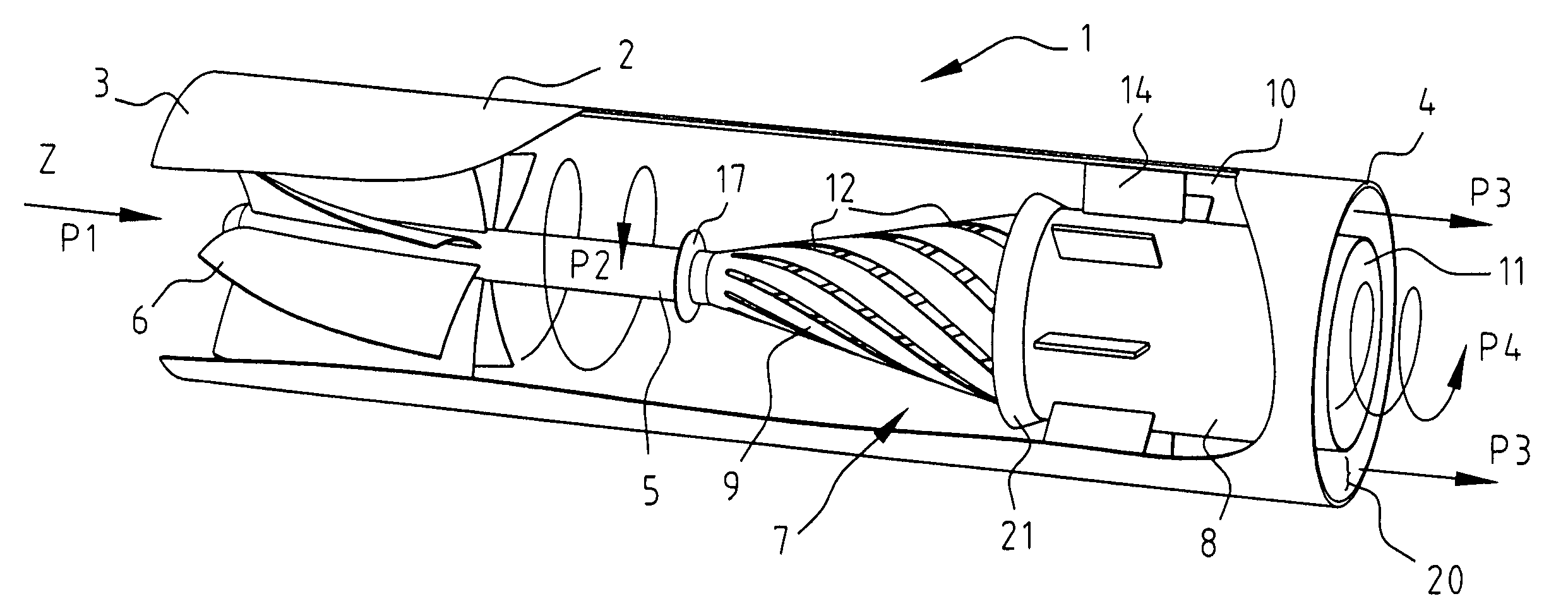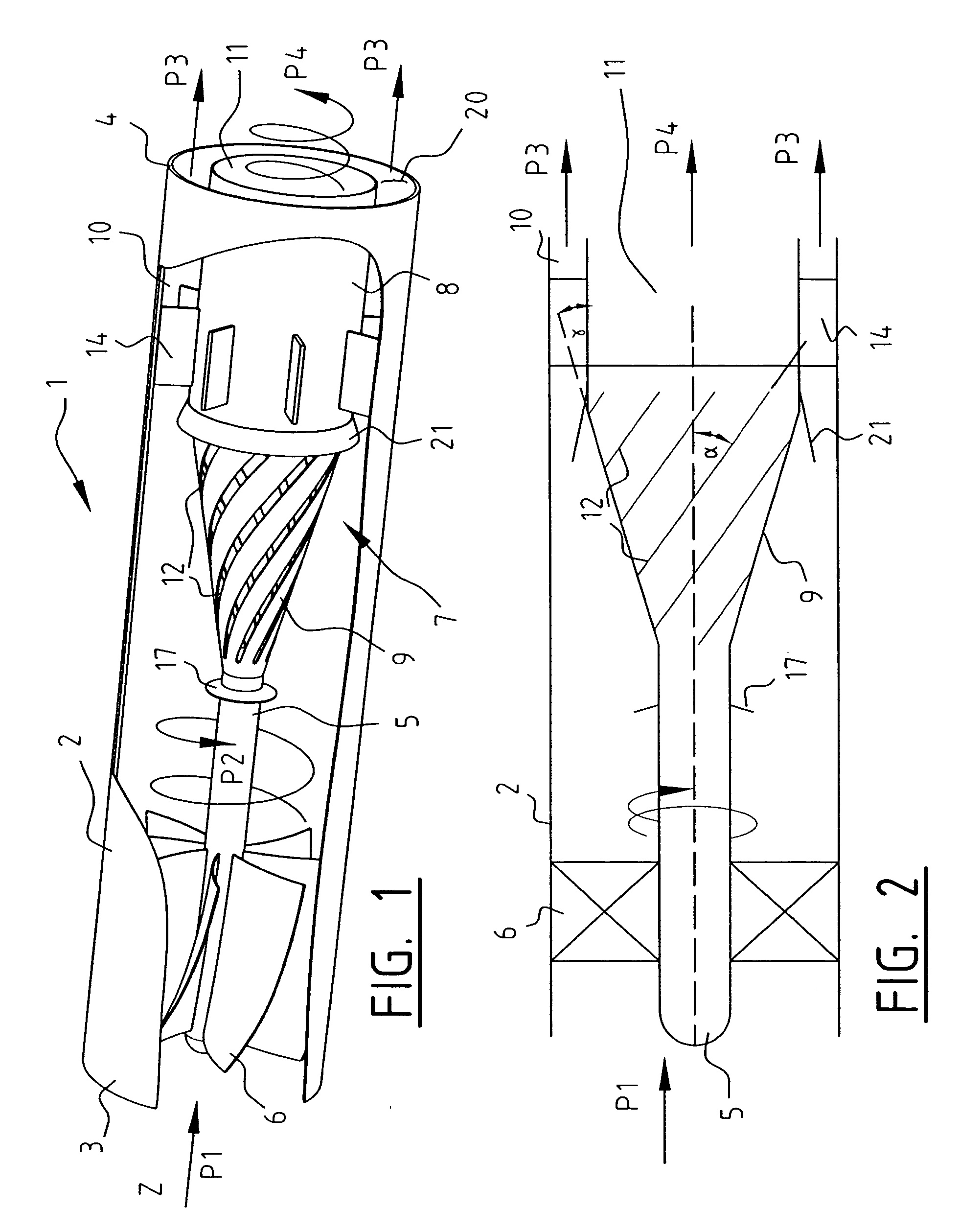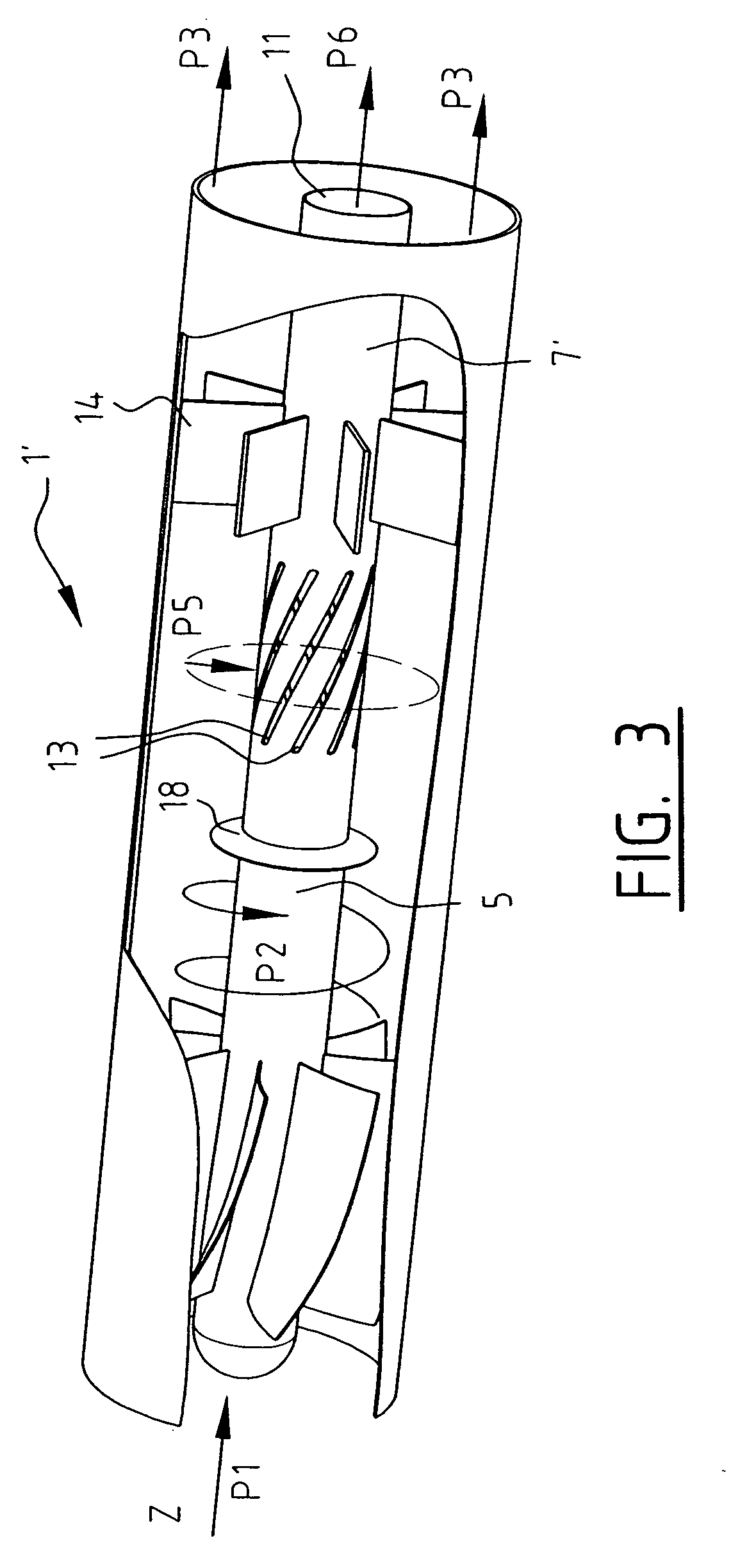In-line cyclone separator
a cyclone separator and separator technology, applied in the direction of vortex flow apparatus, liquid degasification, separation process, etc., can solve the problems of deteriorating the separation characteristics of the separator, relatively high pressure drop, and high pressure drop across the gas-outlet, so as to improve the separation efficiency of the separator, improve the separation characteristics, and improve the separation efficiency
- Summary
- Abstract
- Description
- Claims
- Application Information
AI Technical Summary
Benefits of technology
Problems solved by technology
Method used
Image
Examples
Embodiment Construction
[0044] The embodiments of the separators according to the present invention shown in the drawings are especially intended for separation of a gas phase (gas phase vapor) from a liquid phase (water / oil), for example in a pipeline leading to an oil platform. However, as indicated earlier, the separators can be used separating any mixture of one or more liquids, one or more gasses and / or one of more different types of solid particles.
[0045]FIG. 1 shows a separator 1, including a tube 2 which at its proximal end is provided with an inlet 3 for connecting to the supply part of a pipeline (not shown) and which at its distal end is provided with an outlet 4 for connecting to a further part (not shown) of the pipeline. In the flow space defined by the interior of the tube 2 a central flow body5 is arranged, extending in the axial direction (or Z-direction, as shown in FIG. 1).
[0046] Between the inner surface of the tube 2 and the outer surface of the flow body 5 are arranged a number of c...
PUM
| Property | Measurement | Unit |
|---|---|---|
| angle | aaaaa | aaaaa |
| angle | aaaaa | aaaaa |
| angle | aaaaa | aaaaa |
Abstract
Description
Claims
Application Information
 Login to View More
Login to View More - R&D
- Intellectual Property
- Life Sciences
- Materials
- Tech Scout
- Unparalleled Data Quality
- Higher Quality Content
- 60% Fewer Hallucinations
Browse by: Latest US Patents, China's latest patents, Technical Efficacy Thesaurus, Application Domain, Technology Topic, Popular Technical Reports.
© 2025 PatSnap. All rights reserved.Legal|Privacy policy|Modern Slavery Act Transparency Statement|Sitemap|About US| Contact US: help@patsnap.com



